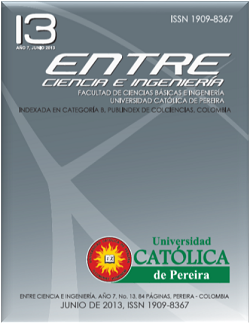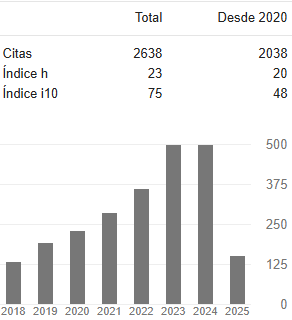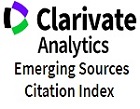Identificación de Virus Informáticos Usando Sistemas Expertos
DOI:
https://doi.org/10.31908/19098367.666Palabras clave:
Sistema experto, Virus informáticosResumen
Se presenta en este artículo la implementación de un sistema experto para la identificación de virus informáticos. El sistema propuesto modela el conocimiento específico del experto en virus informáticos mediante relaciones entre las variables de entrada (antecedentes) y objetivos (consecuentes). Se espera que el sistema informático desarrollado aumente la protección contra las infecciones software
Descargas
Referencias
A. Nikishin, “Malicious software – past, present and future”, Vol. 2, p.p. 6-18, 2004. Disponible en http://www.sciencedirect.com/science/article/pii/ S1363412704000202. Fecha de consulta 19 de Junio de 2012.
C. Zhongqiang, R. Mema, L. Zhanyan, Z. Yuan, C. Zhongrong, A. Delisb, “Malware characteristics and threats on the internet ecosystem”, The Journal of Systems and Software, ISBN 0-8186- 2420-5. Vol. 85. p.p 1650-1672, 2012.
J. Giarratano, G. Riley. “Sistemas expertos. Principios y programación”. International Thomson Editors, 2001.
S. Sahin, R. Tolun, “Expert System with applications. International Journal”, ELSEVIER, Volumen 39, edición 4, p.p. 4609-4617, 2012.
J. Liebowitz. “Expert Systems with applications. An International Journal”. ELSEVIER, Vol. 40, edición 15, 2013.
A. Doumas, K. Mavroudakis, D. Gritzalis, S. Katsikas, “Design of a neural network for recognition and classification of computer viruses”, Computers & Security, ELSEVIER, Vol. 14, p.p. 435-448, 1995.
S. Dong-Her, C. Hsiu-Sen, Y. David, “Classification methods in the detection of new malicious emails”. Information Sciences. ELSEVIER, Vol. 172, p.p. 241-261, 2005.
J. Piqueira, A. Vasconcelos, V. Araujo, “Dynamic models for computer viruses”, Computers & Security, ELSEVIER, Vol. 27, p.p. 355-359, 2008.
S. Wu, W. Banzhaf, “The use of computational intelligence in intrusion detection systems: A review”. Applied Soft Computing. ELSEVIER. Vol. 10, p.p. 1-35, 2010.
P. Sangkatsanee, N. Wattanapongsakorn, C. Charnsripinyo, “Practical real-time intrusion detection using machine learning approaches”. Computer Communications, ELSEVIER, Vol. 34, p.p. 2227-2235, 2011.
H. Elshoush, I. Osman, “Alert correlation in collaborative intelligent intrusion detection systems—A survey”, Applied Soft Computing, ELSEVIER, Vol. 11, p.p. 4349-4365, 2011.
M. Sebring, E. Shellhouse, M. Hanna, R. Whitehurst, “Expert systems in intrusion detection: A case study”. Proceedings of the 11th National Computer Security Conference. Octubre 1988.
T. Lunt, R. Jagannathan, R. Lee, A. Whitehurst, S. Listgarten, “Knowledge-based intrusion detection”. Proceedings of the Annual AI Systems in Government Conference, p.p. 102-107. 1989.
S. Smaha, “HayStack. An intrusion detection system”. Disponible en http://people.scs.carleton.ca/~soma/id/readings/smaha-haystack.pdf. Fecha de consulta, 21 de Junio de 2012.
A. Ajith, T. Johnson, “Distributed intrusion detection systems: a computational intelligence approach”. Disponible en http://wsc10. softcomputing.net/hussein_chapter.pdf. Fecha de consulta, 21 de Junio de 2012.
Ou Ch-M, “Host-based intrusion detection systems adapted from agent-based artificial immune systems”, Neurocomputing, ELSEVIER, Vol. 88, p.p. 78-86, 2012.
C. Primorac, S. Mariño, “Un sistema experto para asistir decisiones turísticas. Diseño de un prototipo basado en la web”. Revista de investigación en turismo y desarrollo local. vol. 4, No 10. Disponible en http://www.eumed.net/rev/turydes/10/index.htm. Fecha de consulta, 9 de Mayo de 2012.
Descargas
Publicado
Número
Sección
Licencia
Derechos de autor 2019 Entre Ciencia e Ingeniería

Esta obra está bajo una licencia internacional Creative Commons Atribución-NoComercial 4.0.



















